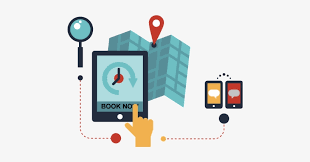Hello!
One of the biggest challenges faced by learning and development teams in the modern business environment is the fast pace of change caused by the rapid advancement in technology worldwide.
 To have a good knowledge of products and services sold by an organization and increase productivity, sales teams, employees, customers, and other stakeholders must have up to date training.
To have a good knowledge of products and services sold by an organization and increase productivity, sales teams, employees, customers, and other stakeholders must have up to date training.
Employees also need to have the right information to build their skills while adapting to the rapidly changing business landscape.
To achieve this goal, many companies use various learning tools to deliver customized training to meet the organization’s needs. These learning tools include LMS and LXP.
Let’s discuss LMS and LXP in detail;
What Is a Learning Management System(LMS)?
 Learning Management Systems are designed for the administration, delivery, and reporting of learning and development initiatives. The LMS is a more administrative centric view and functionality of the learning platform.
Learning Management Systems are designed for the administration, delivery, and reporting of learning and development initiatives. The LMS is a more administrative centric view and functionality of the learning platform.
Learning Managers and Administrators can manage various processes and information ranging from users, instructors, courses and curriculum, classroom events, job roles, competency assignments, notifications, generate reports and data analytics about learning progress, and much more.
With the LMS, administrators can easily assign training content to learners, who get immediate notifications to access such content.
An LMS also collects data for the administrators; some of this data include the number of learners who have completed their training, assessment score, and other key parameters.
One of the significant benefits of LMS is its ability to audit data. LMS access to multiple reporting features also promotes compliance and efficiency among employees, customers, and other users.
Features of Learning Management Systems
 Some of the vital Learning Management Systems include the following:
Some of the vital Learning Management Systems include the following:
1. User Management
LMS offers the ability to manage all the users, internal or external user groups, assignments, and track progress. Users include not only administrators and learners but also instructors, managers, and group administrators
2. eLearning Course Delivery and Tracking
 Self-paced eLearning courses offer the flexibility of scheduling with dispersing audiences. Corporations and learning providers around the globe use online learning platforms to organize and deliver training materials in a digital format. eLearning standards such as SCORM and Cmi5 are designed to ensure that an eLearning course can be played on any learning management system.
Self-paced eLearning courses offer the flexibility of scheduling with dispersing audiences. Corporations and learning providers around the globe use online learning platforms to organize and deliver training materials in a digital format. eLearning standards such as SCORM and Cmi5 are designed to ensure that an eLearning course can be played on any learning management system.
3. Classroom Event Management
You can also manage all aspects of physical and virtual classrooms form enrollment, instructor allocation, and locations to training materials.
4. Reports
Analyze data across all users, groups, courses, classrooms, and other learning resources. Customize and schedule the reports.
5. Dashboards
Visualize data and develop insights about learning outcomes and business impact.
What Is a Learning Experience Platform?
 A Learning Experience Platform (LXP) is a learner-centric platform that provides modern user experiences and ease of use. LXP is a more intelligent experience that learns about the student and recommends the right learning at the right time. It pushes out the information, alerts, and reminders to engage the learner.
A Learning Experience Platform (LXP) is a learner-centric platform that provides modern user experiences and ease of use. LXP is a more intelligent experience that learns about the student and recommends the right learning at the right time. It pushes out the information, alerts, and reminders to engage the learner.
Also, this amazing platform provides access across multiple devices to support learners seamlessly.
It works by consolidating different capabilities into a single portal while using various methods to engage learners, such as social learning, personalized learning, and pathways.
 With a Learning Experience Platform, users can easily log into the learning system and find the most relevant content at the touch of a button without searching for a long time. They can easily choose the preferred content mode, videos, podcasts, articles, blogs, or even microlearning.
With a Learning Experience Platform, users can easily log into the learning system and find the most relevant content at the touch of a button without searching for a long time. They can easily choose the preferred content mode, videos, podcasts, articles, blogs, or even microlearning.
One beautiful fact about LXP is that it puts the learner in total control. Its user-led experience is one of the major functionalities that makes LXP the best suited for the modern business landscape.
It is best suited for engaging learners beyond mandatory compliance training. Besides, the focus on curation reduces the time wasted on searching for endless content leading to more money saved and better time management.
Other benefits of the learning experience platform include the following:
- An open system that accommodates all internal and external resources
- Allows users to contribute their content
- Adaptive learning paths
- Gives room for collaborative learning and mentoring
- Uses new eLearning standards like xAPI to track learning outside formal situations.
Features of Learning Experience Platform
Some of the primary features of LXP include the following:
1. Self-directed
 Employees want more control over their skills and professional development; they want to set their goals and have the ability to pick and choose learning content.
Employees want more control over their skills and professional development; they want to set their goals and have the ability to pick and choose learning content.
Learners are familiar with social media experiences. They want their learning experience to be the same or similar.
Learners do not care where the knowledge comes from – they want it offered to them and readily available – all from one desktop or mobile. >
This is the major premise behind what LXP offers. With this platform, learning is self-directed. This implies that LXP provides a learner-centric learning platform with modern user experience, consumer-grade user interface, and ease of use.
2. Intelligent experience
 Employees want a user-friendly platform that is intelligent enough to help them create learning paths. If they feel they want to learn about a topic that is not readily available on their current company learning site, they want the freedom to search for what’s out there and move on at their own pace.
Employees want a user-friendly platform that is intelligent enough to help them create learning paths. If they feel they want to learn about a topic that is not readily available on their current company learning site, they want the freedom to search for what’s out there and move on at their own pace.
This is why every organization must employ the Learning Experience Platform, a more intelligent experience that learns about the student and recommends the right learning at the right time.
It pushes/recommends the information, alerts, and reminders to engage the learner. The learning experience platform has the intelligence to communicate with the learner using messaging, and intelligent chatbots to notify students when a topic of interest becomes available.
3. Seamless access to multiple devices
 A good learning experience platform provides access across multiple devices to seamlessly support the learner.
A good learning experience platform provides access across multiple devices to seamlessly support the learner.
It allows the learner to move from device to device and expect their learning experience to include desktop, native mobile, and progressive web apps.
The content must work on any device, available anytime.
4. Aggregates content from internal and external sources
Users prefer a combination of bite-size chunks or microlearning to round out their learning path. For example, they may augment their content with third-party content from Coursera.
The Learning Experience Platform aggregates content from internal and external sources; it allows learners to go beyond the corporate training catalog.
5. Makes recommendations using artificial intelligence
 LXP uses artificial intelligence to recommend third-party blog posts, articles, PDFs, videos, and other documents to users searching for content that is tailored to meet their needs, thereby saving lots of time and effort.
LXP uses artificial intelligence to recommend third-party blog posts, articles, PDFs, videos, and other documents to users searching for content that is tailored to meet their needs, thereby saving lots of time and effort.
LXP also gives room for blended learning through videos, articles, webinars, etc. Learners may not know they want blended learning, but the blended approach gives them multiple media sources.
Different media keeps learners engaged, motivated, and allows content to be delivered with the media type best suited per best instructional design principles.
6. Social learning
 Learners want to collaborate with their peers. With Social Learning, LXP allows them to contribute thoughts, ideas, and even their knowledge (user-generated content).
Learners want to collaborate with their peers. With Social Learning, LXP allows them to contribute thoughts, ideas, and even their knowledge (user-generated content).
Learners can reach out to other subject matter experts, instructors to answer questions, brainstorm, and delve deeper into the subject matter.
The platform also allows users to rate the knowledge (posts and lessons) and leave comments viewable by the public.
Learners can create content for discovery by their peers. Learners showcase their expertise, knowledge of the topic, and feel proud, and their reputation increases.
Who Can Benefit from An MS and LXP?
 LMS and LXP are both beneficial to educational institutions and corporate sales teams, among others. Through these tools, organizations can effectively carry out online training to external sales channels, franchisees, and even customers.
LMS and LXP are both beneficial to educational institutions and corporate sales teams, among others. Through these tools, organizations can effectively carry out online training to external sales channels, franchisees, and even customers.
However, before starting a selection process for your software, every organization needs to review its primary objectives.
This is because various vendors cater to different consumer groups. While some specialize in eCommerce, others are known for their online sales training features.
Conclusion
 LMS and LXP, so how do you decide what’s right for you? Tough choice. Since learning platforms aren’t one-size-fits-all, your organization needs to let your needs steer the type of learning platform you pursue with.
LMS and LXP, so how do you decide what’s right for you? Tough choice. Since learning platforms aren’t one-size-fits-all, your organization needs to let your needs steer the type of learning platform you pursue with.
In simple words, most companies have to have mandatory training (i.e. compliance), but also want learners to have self-directed access to materials that align with their learners’ professional curiosity and development – if this sounds like you, you’ll want to consider having LMS and LXP, both platforms available to your learners.
Also read:
- Is Copyright Registration Mandatory to File an Infringement Case in India?
- 3 Factors to Consider When Choosing a Release Notes Software
- Pharma SEO
Thank you!
Subscribe to our newsletter! Join us on social networks!
See you!






